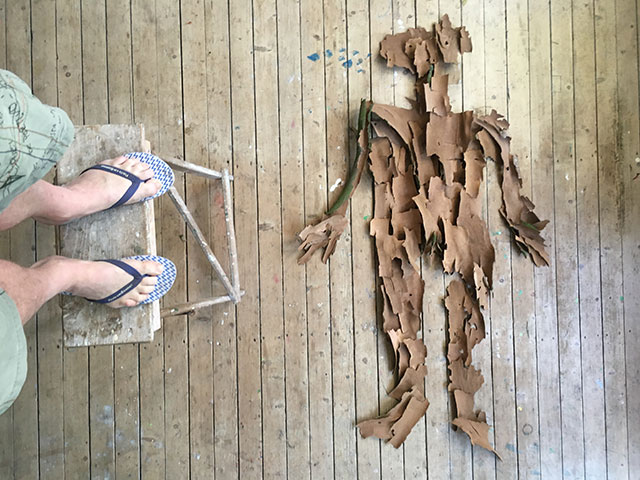Giliam creates work that emerges from intuition and dialogue.

Self-portrait in the making, Amsterdam 2018
About Jan Giliam
Jan Giliam is a Dutch visual artist working in drawing, painting and glass. He explores the tension between spontaneity and craftsmanship through automatic drawing and collaboration.
Giliam creates compositions from coloured and transparent glass, fusing these fragments in his kiln and adding drawings made with heat-resistant markers. The traces of his hand become embedded in the material, transforming the fused glass into something luminous and alive.
Collaboration is central to Giliam’s artistic vision. He regularly works with artist Rik Lina and contributes to the Cabo Mondego Section of Portuguese Surrealism, exploring collective painting and shared creative processes that blur the boundary between individual and collective creation.
Beyond his studio practice, he coaches young people with autism and complex needs as they transition from special education into society. Informed by the philosophy of présence, his approach centres on attentive listening and creative growth.
Trained in Amsterdam and Germany, Giliam’s practice is guided by collaboration, transformation and serendipity.

Self-portrait in the making, Amsterdam 2018
About Jan Giliam
Jan Giliam is a Dutch visual artist working in drawing, painting and glass. He explores the tension between spontaneity and craftsmanship through automatic drawing and collaboration.
Giliam creates compositions from coloured and transparent glass, fusing these fragments in his kiln and adding drawings made with heat-resistant markers. The traces of his hand become embedded in the material, transforming the fused glass into something luminous and alive.
Collaboration is central to Giliam’s artistic vision. He regularly works with artist Rik Lina and contributes to the Cabo Mondego Section of Portuguese Surrealism, exploring collective painting and shared creative processes that blur the boundary between individual and collective creation.
Beyond his studio practice, he coaches young people with autism and complex needs as they transition from special education into society. Informed by the philosophy of présence, his approach centres on attentive listening and creative growth.
Trained in Amsterdam and Germany, Giliam’s practice is guided by collaboration, transformation and serendipity.